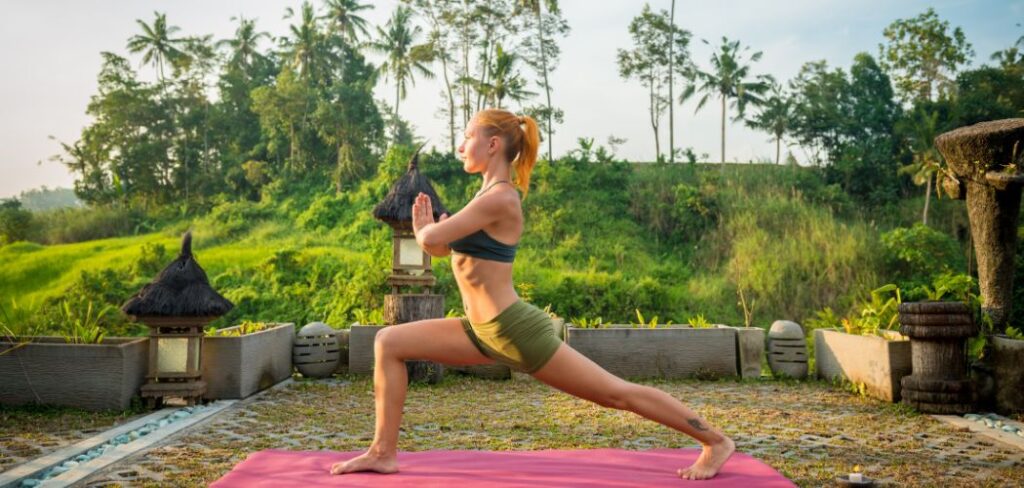Hatha Yoga vs. Vinyasa Yoga
 maashaktiyogbali
maashaktiyogbali
Yoga, in its many forms, has grown into a practice cherished around the globe for its ability to balance the body, mind, and spirit. However, not all yoga styles are the same. Two of the most popular styles are Hatha Yoga and Vinyasa Yoga, each offering unique benefits for practitioners. If you're considering diving deeper into your practice or pursuing yoga teacher training, understanding the difference between these two styles can help you make an informed decision.
What is Hatha Yoga?
Hatha Yoga is one of the oldest and most traditional forms of yoga. Rooted in ancient teachings, its primary focus is on physical postures, or asanas, and breathing techniques, or pranayama. Unlike some of the more dynamic forms of yoga, Hatha Yoga is often practiced at a slower pace, making it a great choice for beginners or those looking to deepen their awareness of individual poses.
In a typical Hatha Yoga class, you'll hold each pose for several breaths, allowing you to focus on proper alignment and deepen your practice. It's a gentle introduction to the world of yoga, offering a balance between physical exercise and mindfulness. The key aim of Hatha is to create harmony between the body and mind, setting a strong foundation for more advanced practices.
What is Vinyasa Yoga?
On the other hand, Vinyasa Yoga is a more dynamic and fluid style that emphasizes the connection between breath and movement. Often referred to as “flow yoga,” Vinyasa links poses together in a sequence, creating a dance-like flow. Each movement is synchronized with an inhale or exhale, making it a continuous, almost meditative practice.
Vinyasa Yoga can vary in intensity. Some classes are fast-paced and physically challenging, while others may be more gentle. Regardless, the focus remains on fluid transitions and creating a seamless flow between postures. This makes Vinyasa an excellent choice for those who enjoy a workout that not only strengthens the body but also enhances flexibility and endurance.
Key Differences Between Hatha and Vinyasa Yoga
Pace and Intensity:
Hatha Yoga is slower, with a focus on holding poses for longer periods. This allows practitioners to focus on alignment and deepening their practice. Vinyasa, in contrast, is faster-paced and encourages continuous movement from one pose to the next.Breath:
While both Hatha and Vinyasa Yoga emphasize breathing, they do so in different ways. In Hatha, the breath is often used to deepen into a pose or relax, while in Vinyasa, the breath is synchronized with movement, creating a fluid and dynamic practice.Mindfulness vs. Flow:
Hatha Yoga is more meditative, encouraging students to stay in each pose and connect with their bodies. Vinyasa, on the other hand, focuses on flow, requiring a balance of strength, flexibility, and coordination.Physical Demands:
Vinyasa tends to be more physically demanding due to the continuous movement and transitions between poses. Hatha, being slower, allows practitioners to build strength and flexibility gradually.
Which One is Right for You?
Choosing between Hatha and Vinyasa Yoga largely depends on your personal goals and preferences. If you're a beginner or seeking a more meditative practice, Hatha Yoga might be the better fit. Its slower pace allows for a deeper understanding of individual postures and greater mindfulness. It’s also an excellent style for those recovering from injury or anyone looking for a gentler practice.
On the other hand, if you’re seeking a more dynamic, full-body workout that enhances strength, endurance, and flexibility, Vinyasa Yoga might be what you’re looking for. Vinyasa’s flowing sequences can be both physically challenging and invigorating, making it perfect for those who enjoy a faster-paced practice.
Explore Your Practice in Bali
Whether you're drawn to the mindful stillness of Hatha or the flowing energy of Vinyasa, deepening your practice through yoga teacher training can be a transformative journey. At Maa Shakti Yog Bali, you can explore both styles under the guidance of experienced instructors. The serene setting of Bali provides an ideal backdrop for immersing yourself in the rich teachings of yoga, helping you grow both as a practitioner and a teacher.
Maa Shakti Yog Bali offers a comprehensive curriculum that incorporates both Hatha and Vinyasa Yoga, allowing students to experience the best of both worlds. Whether you're a beginner looking to learn or an experienced yogi aiming to expand your knowledge, this yoga school in Bali provides the space and support to deepen your practice.
Conclusion
Hatha Yoga and Vinyasa Yoga, while different in pace and intensity, both offer profound benefits for the body, mind, and spirit. Whether you prefer the steady, grounding nature of Hatha or the fluid, dynamic flow of Vinyasa, each style can enhance your overall well-being. If you're ready to take the next step in your yoga journey, exploring these styles at a training school like Maa Shakti Yog Bali can provide the guidance and inspiration you need.
Embrace the balance between movement and stillness, and discover which style resonates most with you.
Subscribe to my newsletter
Read articles from maashaktiyogbali directly inside your inbox. Subscribe to the newsletter, and don't miss out.
Written by

maashaktiyogbali
maashaktiyogbali
Nestled in the Sayan district of Ubud, Bali’s art and culture capital, Maa Shakti Yog is a Yoga Alliance-certified school offering an idyllic setting just minutes from Ubud Monkey Forest, Blanco Museum, and Saraswati Temple. Our spacious rooms and yoga hall are equipped with modern amenities, including a swimming pool, lavish garden, and campus-wide Wi-Fi. We offer a comprehensive range of yoga courses tailored for beginners, intermediates, and advanced practitioners, allowing students to delve into the essence of yoga in a serene and inspiring environment.